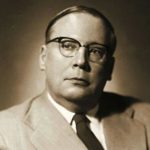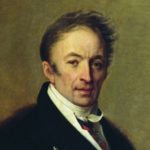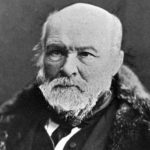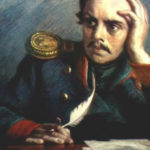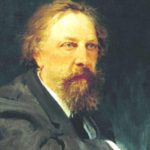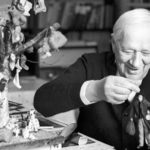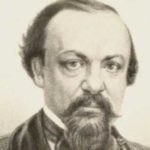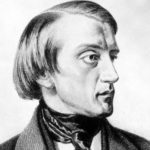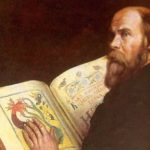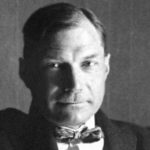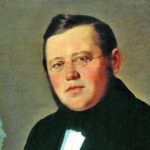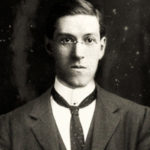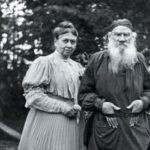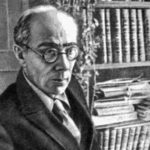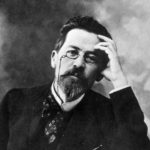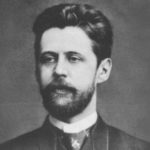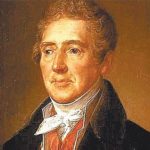Interesting facts about Nikolai Gogol
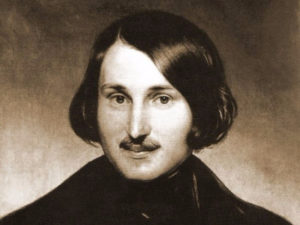 Nikolai Gogol is a famous Russian writer throughout the world, whose works have been translated into all major languages of the world. For many, he is familiar with his most famous work, “Dead Souls”, whose planned continuation never saw the light, but in his arsenal there are many other equally significant works.
Nikolai Gogol is a famous Russian writer throughout the world, whose works have been translated into all major languages of the world. For many, he is familiar with his most famous work, “Dead Souls”, whose planned continuation never saw the light, but in his arsenal there are many other equally significant works.
If you believe in family legends, Nikolai Gogol came from an ancient kind of Cossacks, although this fact seems doubtful to historians.
Gogol’s mother got married at the age of 14, and her husband was twice her age. During the years of marriage she gave birth to her husband 12 children, including the future classic of Russian literature. True, most of Gogol’s brothers and sisters died at birth or in childhood.
After his arrival in St. Petersburg, Nikolai Gogol planned to perform on stage, but he was never taken to the cast.
Gogol claimed that he did not intend to burn the second volume of “Dead Souls” and a number of other works, but he was forced by the “evil spirit.”
Nikolai Gogol was engaged in needlework since childhood – he was able to knit on knitting needles, weave belts and cut out clothes for his sisters.
The writer was very fond of miniature books – for example, he sketched the encyclopedia on mathematics with all the dislike for this science, since the size of the book was about 10 centimeters in length and 7 in width.
While working on his masterpieces Gogol often rolled balls of bread crumb or ate sweets.
Gogol claimed that the plot of “Viya” is an ancient legend, which he remembered verbatim and then recorded. True, no connoisseur of folklore has ever heard of such a legend.
Nikolai Gogol died a month before his 43rd birthday – the writer stopped eating, went to bed and fell into unconsciousness. All attempts of friends and doctors to save him were futile.
After Gogol’s death, his heirs left personal items worth just over 43 rubles. The only value that the writer possessed was a gold watch that had previously belonged to Vasily Zhukovsky and who kept the memory of the deceased Alexander Pushkin – they were exhibited at 2:45 pm, the time of death of the great poet.
The sepulchral stone, originally lying on the grave of Gogol, was later replaced by a monument depicting the figure of the writer. The history of the block of marble did not end there – in the ancillary premises of the Novodevichy cemetery she was found by the widow of Mikhail Bulgakov, who was looking for a gravestone for her husband. She bought a tombstone, after which it was installed on the site of the author’s resting of the “Master and Margarita”.
Nikolai Gogol liked to serve his guests with a drink, jokingly called himself “gogol-mogol” – it included goat’s milk and rum.
The writer took sugar from the hotels, where he stayed, then to eat it at work. Gogol in general was a big lover of sweets – he could eat a whole jar of jam in one sitting.
Gogol told his friends that the French doctors allegedly found in his body an anomaly – the writer’s stomach was turned upside down.
Nikolai Gogol was never married and had no children. There was no information at all about his love affair, so it is believed that the writer died a virgin.
Gogol loved to cook – especially he managed vareniki and dumplings. At the same time, the favorite dish of the writer was an Italian pasta with spices and parmesan cheese.
The writer was panic-stricken with a thunderstorm.
Nikolai Gogol categorically did not like his nose, although he devoted a separate work to this part of the body. It is interesting that in all portraits of the writer his nose looks differently – it is believed that so the artists intended to confuse future researchers of Gogol’s life.
